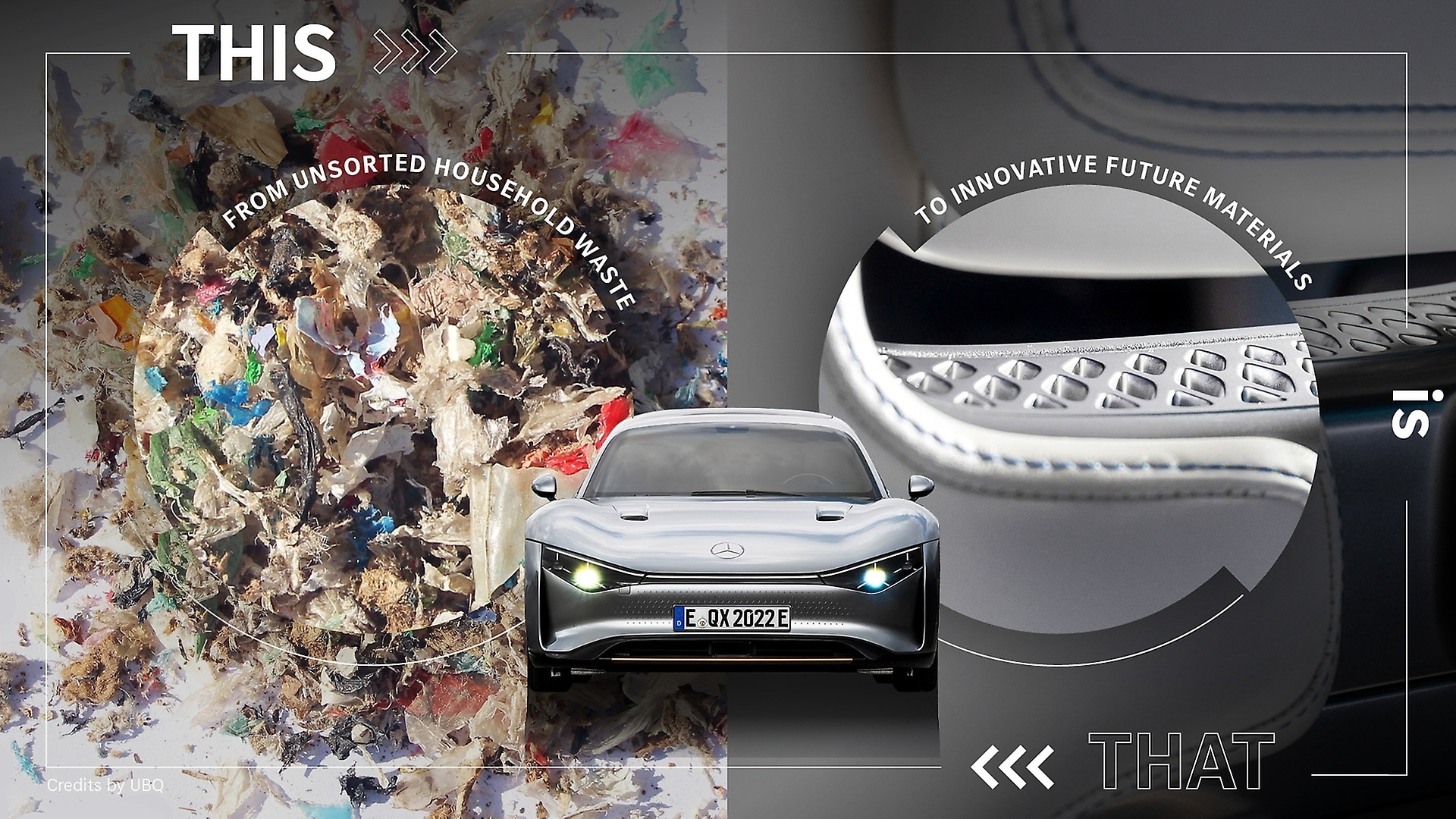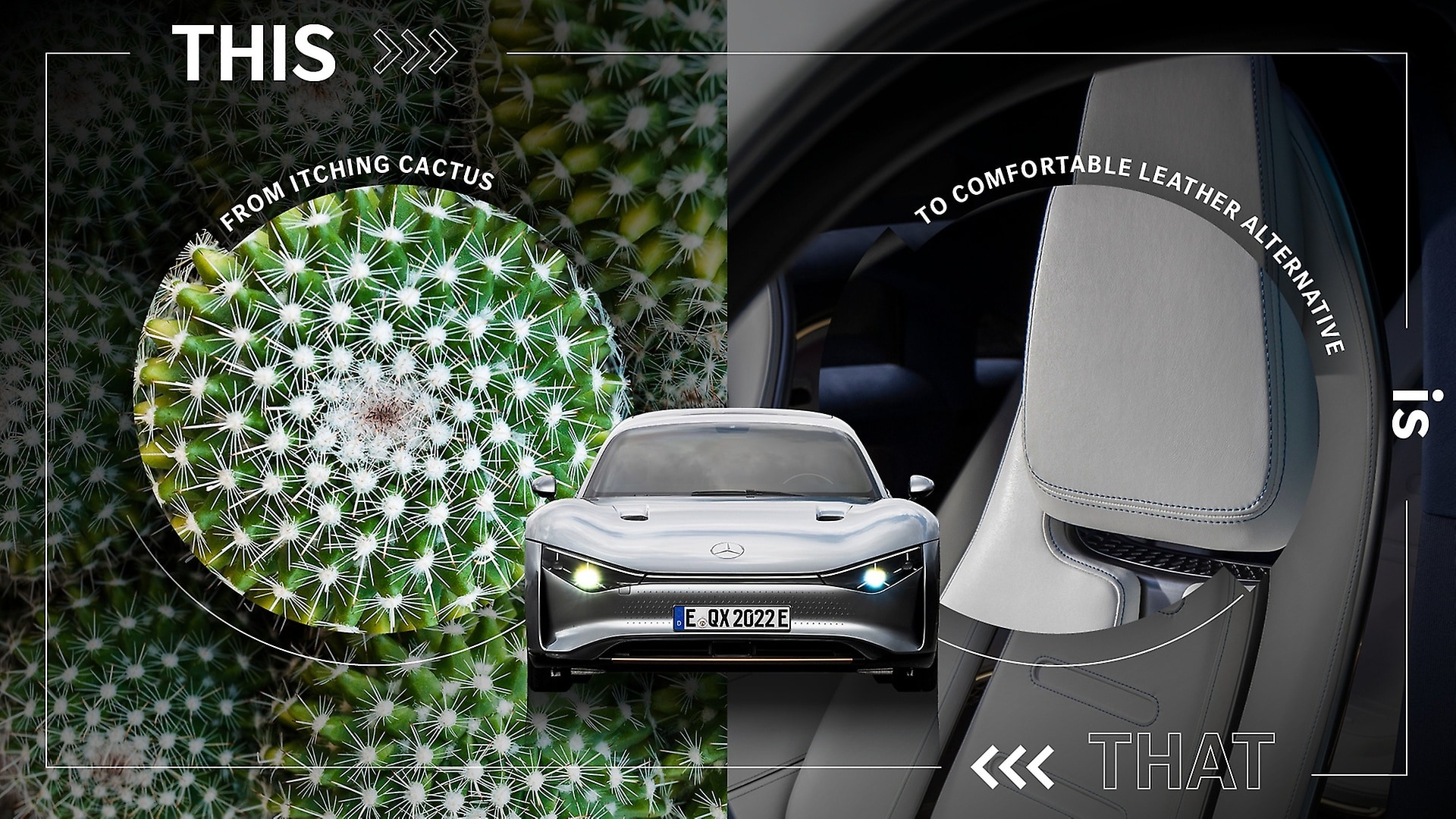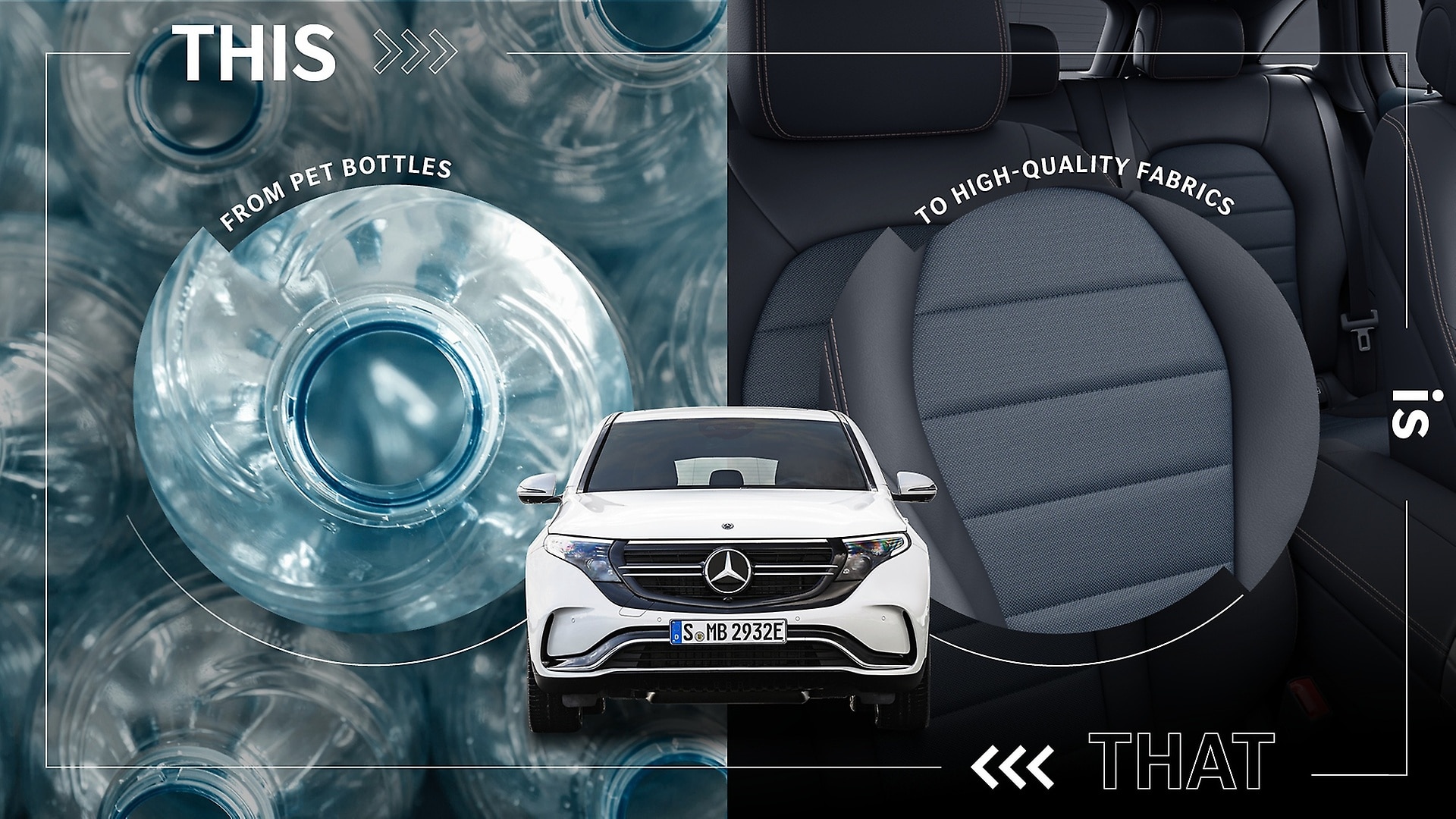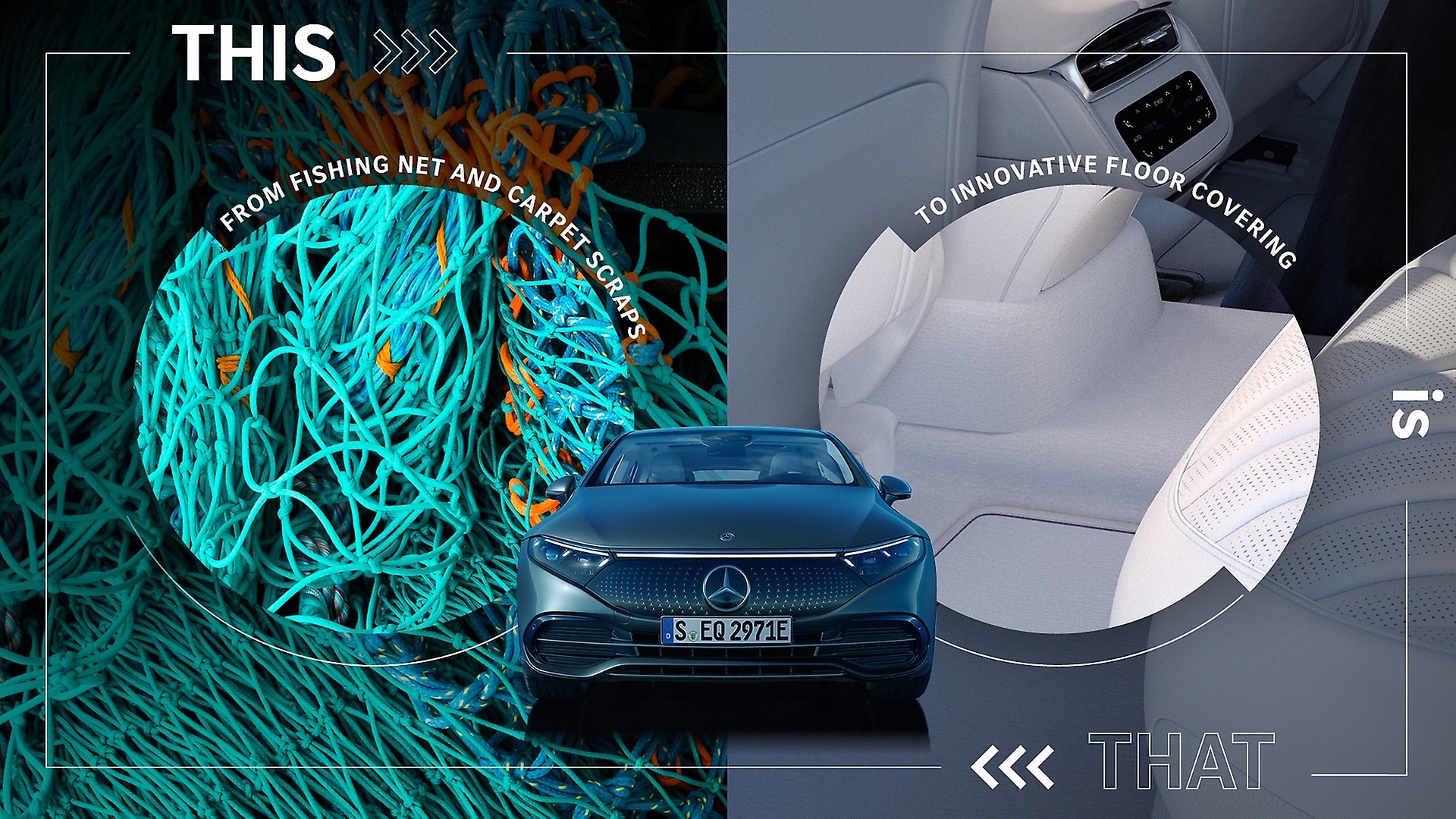March 11, 2024 – The highest visual and tactile quality, comfort, functionality, durability, and sustainability: the materials used in Mercedes-Benz vehicles must meet high standards. The company is researching new, resource-conserving materials to reconcile sustainability and luxury.
Mercedes-Benz is pursuing a holistic approach. With “Ambition 2039,” we are pursuing the goal of a fully networked and net carbon-neutral fleet of new vehicles in 2039 – eleven years earlier than EU legislation stipulates. Special attention is being paid to the conscious and careful use of non-renewable as well as renewable resources. The company is working intensively on closing material cycles, significantly increasing the proportion of recycled materials in its vehicles and researching new materials that are in harmony with nature.
Mercedes-Benz pursues the goal of achieving more with less. To this end, the company is accelerating its pace of innovation and bringing new, sustainable technologies into series production as quickly as possible. An example from the VISION EQXX: after only a few months, the first sustainable material from the technology carrier will be integrated into ongoing series production. The EQS and EQE electric vehicles, for example, will be equipped as pilot series with cable ducts made with the plastic substitute material UBQ™, which is obtained from household waste.
The sustainable UBQ™ material is obtained from the conversion of mixed household waste, which has been difficult to recycle so far, and is therefore often thermally processed or ends up in landfill. The material includes food waste, mixed plastics, cardboard, and baby nappies. Further applications of UBQ™ such as underbody panels, wheel arch linings and engine compartment covers are currently being tested.
Design for environment
At Mercedes-Benz, sustainability does not begin with automobile production, but rather in the early stages of product development. Mercedes-Benz calls this “Design for Environment”. The vehicle manufacturer takes a holistic approach to this, both in terms of the CO₂ emissions and the consumption of natural resources. In vehicle development, the composition of all materials to be used is reconsidered and possibilities for more sustainable alternatives are examined. This applies to surface materials and to the materials that are not visible to the customer. Examples in vehicle interiors include the use of materials containing high levels of recycled elements and innovative materials of the future. In the body and body shell, Mercedes-Benz already uses CO₂ reduced steel in some model series, the production of which significantly reduces CO₂ emissions compared with classic blast furnace steelmaking. The company relies and focuses on innovative materials and technologies designed to meet Mercedes-Benz’s demands for luxury and sustainability.
1. Sustainable luxury – Leather and leather alternatives
The vehicle interior is an important part of the brand experience for customers. The highest visual and haptic quality are top priorities, along with comfort, functionality, and durability. Since the early days of the car, leather has been synonymous with high-quality interior features that many customers desire. Here, too, Mercedes‑Benz takes a holistic approach to making this luxury sustainable.
Vehicle interior: Sustainably processed leather
Starting next year, Mercedes-Benz will successively offer only sustainably produced and processed leather in all model series. The consideration ranges from livestock breeding to the tanning process. Mercedes-Benz already requires compliance with various animal welfare criteria in its specifications. Among other things, the company requires its suppliers to comply with the Animal Welfare Committee’s “5 Freedoms Of Animal Welfare
For a for a less environmentally damaging tanning process, only plant-based, organic mineral or, alternatively, sustainable tanning agents that are completely free of chromium — such as dried coffee bean husks, chestnuts, or extracts from other renewable raw materials — may be used to tan leather for Mercedes-Benz products in future. In addition, the leather for Mercedes-Benz products may only be processed in tanneries that are certified according to the Gold Standard of the ‘Leather Working Group’. This includes important environmental aspects such as reducing the use of water, energy, and chemicals in the tanning process. In addition, Mercedes-Benz works together with suppliers to continuously improve the sustainability of leather products. For this purpose, the partners are required, for example, to present a life cycle assessment of the entire value chain from the farm to the finished leather. In this way, targeted measures can be taken to reduce the ecological footprint of the leather.
Innovative materials: development of sustainable textiles and leather alternatives
At the same time, Mercedes-Benz is conducting intensive research into animal-free alternatives to genuine leather. They should not only conserve natural resources for future generations, but also offer the highest quality in all aspects. Promising alternatives to genuine leather have already been presented in the Mercedes-Benz VISION EQXX, made, for example, from renewable raw materials such as powdered cactus fibres or from mycelium, which is the rootlike underground structure of mushrooms.
Mercedes-Benz offers various leather-free trim options in its vehicle interiors, including selected compact models such as the A-Class. These include a high-quality leather as well as a microfibre nonwoven fabric that consists of up to 73 percent recycled material. It is used in the vehicle interior on the seat cover, steering wheel, centre console and door panel. The proportion of recycled material will be continuously increased in future and the range of leather-free equipment is to be extended to other vehicle models. For us, the sustainability of the materials is fundamentally decisive.
2. Conserving resources through innovative recycled materials – Example fabric
Recycled materials are already in series production in many vehicles today. In the interior, for example, Mercedes-Benz offers various high quality upholstery fabrics made from up to 100 per cent recycled PET bottles, in addition to leather replica and microfibre. The floor coverings in the EQS use a nylon yarn that comes from recycled carpets and recycled fishing nets. In addition, Mercedes-Benz also relies on the use of natural fibres and textiles to replace conventional plastics with renewable raw materials.
3. Innovative materials of the future
In Group Research, the company is examining the series launch of promising new materials that meet Mercedes-Benz’s high standards of sustainability and quality. This includes a high-performance plastic with a painted surface obtained through innovative chemical recycling. In chemical recycling, used tyres and otherwise difficult-to-recycle plastic waste are broken down into their chemical components in such a way that entirely new materials can be produced from them. The combination of raw materials from chemical recycling with the renewable raw material biomethane reduces the use of fossil-based resources. Mercedes-Benz has already entered first components from chemical recycling into series production. Since 2022 the EQE and S-Class are the first series-production models which are available with bow door handles manufactured using a combination of biomethane and pyrolysis oil made from scrap tyres, instead of raw fossil resources. The S-Class will also come with a crash absorber based on this combination of raw materials. As part of the front end, the part creates a more even distribution of the forces acting on the other car in a frontal crash. Forthcoming models such as the EQE SUV will be equipped with bow door handles made from this innovative plastic as well. Looking to the future, the aim is to progressively increase the use of this more sustainable recycled material, and also to use chemical recycling in combination with the biomass balance approach for further plastic vehicle parts.
Another promising material that could be used in rear seat cushions is a partially CO₂ based foam. The main component of this automotive-grade polyurethane foam is polyol, and it chemically binds CO₂ which would otherwise be released into the atmosphere. By weight, the carbon dioxide can make up to 20 per cent of the polyol.
4. CO₂ reduction in body-in-white and body
A holistic sustainability assessment of all materials includes not only the vehicle interior but also the body and shell. Special attention is being paid to materials that are particularly CO₂ intensive in production, such as steel and aluminium.
Already in series production: steel with improved carbon footprint
As part of Ambition 2039, Mercedes-Benz is pursuing the goal of decarbonising the steel supply chain, deliberately focusing on the avoidance and reduction of CO₂ emissions rather than compensation for CO₂ emissions. In this way, the manufacturer is consistently reducing CO₂ emissions in the steel supply chain as a first step. The VISION EQXX uses CO₂ reduced flat steel from Salzgitter Flachstahl GmbH, which is produced 100 per cent from scrap in the electric arc furnace. The low-alloyed grades are more than 60 per cent CO₂ reduced compared to the classic blast furnace route. They are being integrated simultaneously in initial applications in the current A-Class, the current E-Class, the new C-Class and the EQE.
In addition, Mercedes-Benz sources steel from the US supplier Big River Steel, which reduces CO₂ emissions in steel production by more than 70 per cent through the use of recycled steel scrap and renewable energy. By contrast, steel produced using a classical blast furnace emits an average of more than two tons of CO₂ per ton.
A question of technology: plans for carbon-free steel from 2025
In the next step, from 2025, Mercedes-Benz will use steel in the vehicle production of various models that is going to be almost completely CO₂ free, thanks to manufacturing with hydrogen instead of coking coal. To this end, the company has become the first car manufacturer to take an equity stake in the Swedish startup H2 Green Steel (H2GS). As part of a partnership with Swedish steelmaker SSAB, the first prototype parts for body-in-white applications made from almost fossil-free steel are already being planned as early as this year. The partner will produce a steel from iron made with hydrogen from its pilot plant in Luleå, which can be used in safety relevant areas of the car body.
Recycled aluminium
The decarbonisation of the supply chain is also being consistently worked on in the use of aluminium. In the production of the body‑in‑white for the Mercedes-AMG SL, structural castings made of die-cast alloys made from up to 100 per cent recycled aluminium scrap are being used for the first time. The advantage: when using secondary aluminium from aluminium scrap, around 90 per cent of the energy required can be saved compared with the production of primary aluminium, while resources can be conserved.






